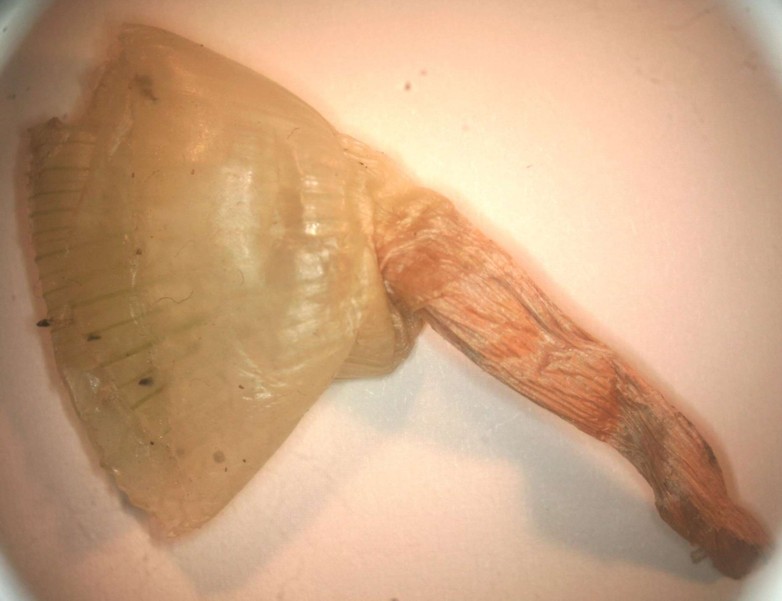


16 september 2022
John Bjarne Grover
One of the shortest poems in 'The Endmorgan Quartet' is this single-liner from TEQ book 12:
TEQ #971
Acts 9:9
καὶ
ἦν
ἡμέρας
τρεῖς
μὴ
βλέπων,
καὶ
οὐκ
ἔφαγεν
οὐδὲ
ἔπιεν.
The [...reputation...] goes beyond the hoof-lin.
15.03.01
What is interesting with this very short poem is the relation between the greek original (Acts 9:9) and the single-line poem. (As usual, I had written the book first and found the parallel text afterwards - this was the book I had read on the bench under the Flaubert memorial in Jardin du Luxembourg in Paris - when the iranian refugee came with a book and sat down next to me only very few lines after I had started reading my own manuscript - and it was after this that I found and aligned the greek to the book). In the second word of the line there was something but it slipped out of my attention while I was about to write it down and it is possible but not certain that the word was '...reputation...'. My guess is that this could have belonged to another metaphysical reality which overlapped somewhat with the line in question.
'Reputation' cp. 'hemeras treis', 'me blepon'
'Goes beyond the hoof-lin' cp. 'kai ouk ephagen oude epien'
but clearly the relations between alphabetic letters and poetic-mystic meaning must be something worth philosophically if they shall apply like this - and I believe it is possible to do more detailed studies of this relation.
The greek line is 'and for three days he could not see, and did not eat or drink'. ('And it was days three not seeing, and not eating and not drinking').
Searching for some etymology of 'reputation' I look up various sources for re-PUT... and find e.g.
1. Varro vi:63, Varro vi:84
2. Walde-Hoffmann puteus, puto, putus
3. Frisk 'ptusso' = 'folding'
An interesting comment is found on latin 'puteus' = 'well' and I find an interesting comment in Tintoretto 'Lazarus' in Scuola Grande, Venice (see also this source) -



here annotated for showing the relations to 'bajonett' in the study of mystic numbers. The annotation shows the guitar and the 'bayonet raised on your head' along with the 'brush of hair' to the right (the hand curling or 'brushing' arpeggio-like along the throat or shoulder of the 'big face', along the 'Schlüsselbein') - here from 'Stillhetens åndedrag' #60:
|
Du kan reise din bajonett på hodet som var du en gitterflekks år. Da lyser det i visjonenes kode med guitar og en børste av hår. |
You can raise your bayonet on your head as were you a gridstain's year/[wound]. Then shines it in the code of visions with guitar and a brush of hair. |
As it is shown in the english translation, and as I could conclude later, the correct version is 'som var du en gitterflekks sår' and probably not 'som var du en gitterflekks år'. Or maybe it is better without that 's-'.
Now the question is whether this is what the 'hoof-lin' is about - that textile lifted like a 'bayonet' or 'hoof' over the head in Tintoretto's work, as a 're-puteus' of the well below. See also the lower hand (along the 'guitar-strings') with the parallel hand above it, the 'brushing' hand along the neck and shoulder - in which case the 'lin' could be the lower woman's white clothing around neck and shoulder. That makes for a parallelogram out of this 'hoof-lin' to the left and the two hands ('re-putation'?) to the right - like the parallels of the greek from Acts 9:9 and my line? Could be one could find something interesting for the problems of the foldings of the Yijing.
The parallelogram has a parallel in the 2 last stanzas of 'Stillhetens åndedrag' #49 'Lazarus'. [22/9-2022: See also this].
The quote from 'Stillhetens åndedrag' #60 is found in this article to belong to Tintoretto's Santa Maria Maddalena in Scuola Grande - and there one could perhaps see why the reputation could go beyond the hooflin - see the same form here - to the right = this ex nihilo resembling the divided tree in Tintoretto's 'Santa Maria Maddalena'.
18 september 2022: This provides the basis for a quasi solution to the riddle of the 'blue ecstasy' by the reading of the holy script upside down (and hence backwards) - here Acts 9:9:


leiue gno le lafe kno la k lou egg liri Siede badri deili jak
'Sam-leie' = norw. for 'sexual intercourse', in 4-letter language called 'knulle', here with various variants 'gnolle' etc. Cp. 'Stillhetens åndedrag' #3 'Kn*lle'.
liri Siede badri deili jak
ler i skjeden bader i deilig jack
laughs in the vagina, bathes in lovely jack
bader i leilig jack
bathes in flatly jack
Which means that Acts 9:9 upside-down and hence backwards can be read in the reverse series of the ex nihilos of 6 september 2022 - that is:

leiue gnole lafe knola klouegg

liri Siede badri [deili]

[deili] jak
This explains also the role of the 'iranian refugee' when the text I was reading seemed to be played backwards in the real world story.
In Tintoretto the Santa Maria Maddalena is not bathing in lovely jack but reading at lovely lake or, say, creek - with this notable structure of what I call 'reputation beyond hooflin' as dominating element and a book in her lap.
The 'jack' was probably a piece of onion from the kitchenbench but the other two seem to have been ex nihilos - which means that they could have got their form from the need to have the theory of reading upside-down and backwards corroborated - a friendly support to the theorist who thereby can feel his world safer and sounder by way of his 'faculty of faith' - it has always been my motto that theory without empirical evidence is but a vain chasing after the wind - and thereby be rescued from the yawning gap of chaos which doubt could postulate behind the screen. Jesus walked on water with his faith - when Peter tried he started sinking because of some doubt but Jesus helped him up again and they climbed into the boat.
The form 'klouegg' - should it read 'klonegg' or 'klo-vegg'? 'Knalle klo-vegg' could be an unfortunate archetypal idea among what seems to be associated with the idea of 'knulleruds' - I recall the first reports from the 2012 Toulouse shooting spree that took place probably the day after I had got the magnet-resonance brain scan done (at MRT Mariahilf) - telling that the Toulouse police fired 300 shots into the bathroom where the terrorist was hiding - like 300 backspace keystrokes for editing a brainscan - before he leapt to his death from the high toilet window - now told this possibly edited way - of course today one naturally speculates if the terrorist was hired for making those 'backspace sounds' on the bathroom wall in order to neutralize the evidence in the brain scan - as if I should have been 'born to lose', as could be the desired history among certain interests - I notice also that the arabic spelling of his name looks like 'gljo lazo' which sounds like 'it looks like lazer'. 'Bader i leili jak' could also be interpreted 'bade[t] er i leilighet' = 'the bathroom is in the flat/apartment' - and hence such a shooting spree exit could be motivated by a recognition of relevance of the Santa Maria Maddalena qua ''bader/badet er i deili[g] lake/creek".
A better reading of the 'klouegg' took place on 1 september 2022 after I had put this page out on the internet. A wasp had come to my open window and suggested that I close it, and when a little later I looked up 'Stahleis in Griechenland' in my DDS abs #100 and read the 'inversions' downwards (dividing with 2,22) untill I came till DDS abs #5 ('Im Alpental') and should just start to read it when there was a knocking sound on the window glass. I went to see and a bird of prey was sitting on the little metallic [inter]net I have outside the window - it lifted in a 'vertical takeoff' when I looked out the window and two small pieces of down fell down after it when it lifted up. Clearly this could be telling of this 'claw-[v]egg', 'claw-wall'.
For the alternative to 'liri Siede' in 'liri biede' search this file for 'Biedgo' and the story from Vilnius - the '666' for the '999' upside down. It is noticed that TEQ #971 is also nearly 0.666 through book 12 - it is the next poem which is the two thirds by counting poems.
All this is likely to conspire on just that ratio 2/3 for one of the acoustic features in the grammar of speech in 'A waist of time'.
(The poem is one line only. It is my own view that every line in TEQ is a great discovery).
Sources:
Frisk, H.: Griechisches Etymologisches Wörterbuch. Heidelberg, 1960.
Hahn (post Lachmannum et Tischendorfium): Novum Testamentum Graece, Lipsiae 1861.
Varro, Marcus Terentius; On the Latin language. Translated by Kent, Roland G. London 1993.
Walde, A.: Lateinisches Etymologisches Wörterbuch. 3e Auflage, bearb. bei J.B. Hoffmann. Heidelberg, 1938.
https://www.wga.hu/frames-e.html?/html/t/tintoret/3b/2upper/2/29lazar.html
© John Bjarne Grover
On the web 16 september 2022
Last updated 22 september 2022